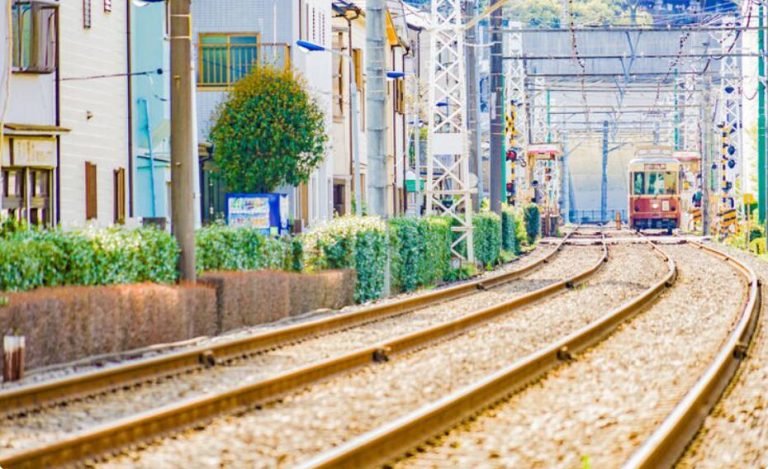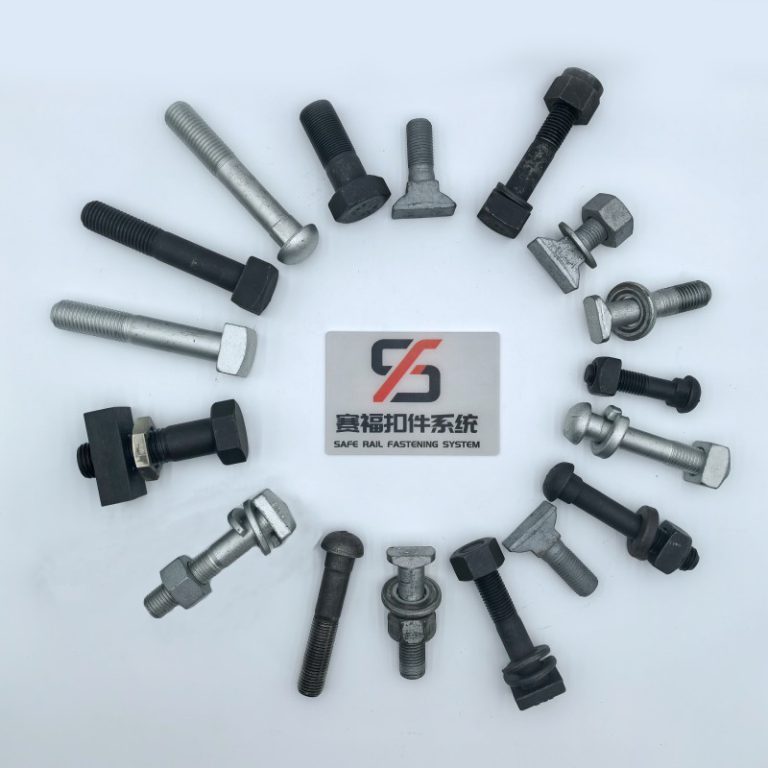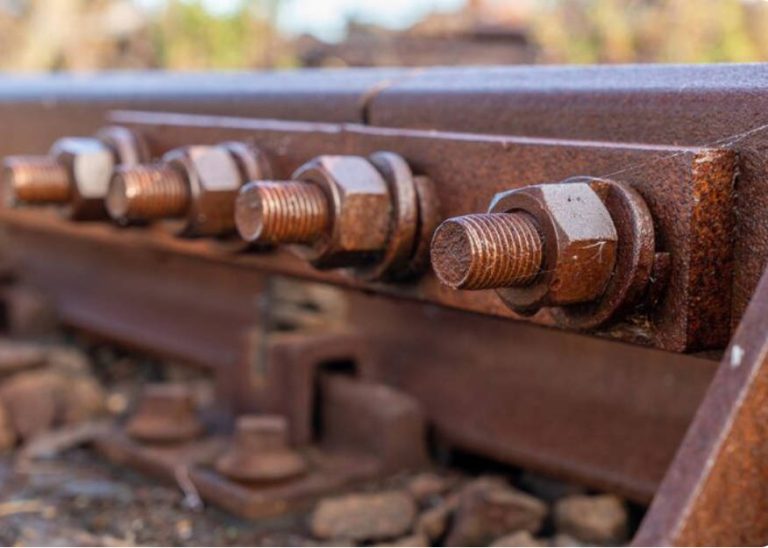In the realm of railway construction, What is a tension clamp? Tension clamps play a pivotal role in ensuring structural integrity and stability. These essential components provide the necessary support for installation cables, adapting seamlessly to temperature fluctuations and varying conditions. As we delve into this comprehensive overview, we will explore the intricate details of tension clamps, shedding light on their significance and diverse applications within the railway industry.
What is a tension clamp?
In the realm of railway construction, understanding the intricacies of tension clamps is paramount. These essential components serve a crucial role in ensuring structural integrity and stability within the railway industry. Let’s delve into the fundamental aspects that define tension clamps and their significance in construction projects.
Definition and Basic Function
The primary function of tension clamps lies in providing mechanical support and facilitating precise pressure application. This ensures that installation cables are securely fastened to supports, guaranteeing stability under varying conditions. The mechanism behind tension clamps involves a spring-operated design that enables uniform pressure distribution along the clamped surface.
Mechanical Support and Pressure Application
Tension Clamps: Ripped baseplates, “Skl” tension clamps, rail pads, and under baseplate pads are utilized to fasten turnout parts on concrete bearers. These components ensure a permanently elastic clamping mechanism, meeting the stringent requirements of continuously welded tracks.
Rail Pads: Mounted on concrete bearers using four coach screws, these pads enhance the creep resistance and twisting resistance necessary for maintaining track integrity.
Key Components
When dissecting the anatomy of tension clamps, two key components stand out: the spring mechanism and clamping force. Understanding these elements is vital to grasp how tension clamps operate effectively in railway construction projects.
Spring Mechanism
The spring mechanism within tension clamps plays a pivotal role in adapting to temperature fluctuations and external forces. By utilizing innovative tension clamp technology, these springs provide flexibility while ensuring a secure connection between components.
Clamping Force
The clamping force exerted by tension clamps is essential for maintaining a tight grip on installation cables or other materials. Products like M9 Tension Clamp exemplify this concept by offering extreme performance capabilities through compact designs with outwardly curved spring arms.
By comprehending these core components of tension clamps, railway construction professionals can harness their benefits to enhance project efficiency and structural reliability.
Types of Tension Clamps
In the realm of railway construction, various tension clamps serve distinct purposes, each tailored to specific applications within the industry. Understanding the nuances of these clamps is essential for professionals seeking optimal solutions for their projects.
Constant Tension Clamps
Springband Hose Clamps
The Springband Hose Clamps stand out as versatile components designed to withstand extreme cyclical temperature loads. Their self-tensioning nature ensures a secure grip on hoses, adapting effortlessly to fluctuations in temperature and pressure variations.
These clamps are particularly beneficial in scenarios where traditional clamping mechanisms may fail due to varying environmental conditions. The springband design allows for consistent tension, reducing the risk of slippage or detachment over time.
Supra Constant Tension Clamps
Supra Constant Tension Clamps represent a pinnacle of engineering excellence in the realm of tension clamps. Crafted from 430 Stainless Steel, these clamps offer a unique tightening speed and utilize specialized band and housing materials for enhanced durability and performance.
Railway construction projects that demand precision and reliability often turn to Supra Constant Tension Clamps for their exceptional properties. The specific design elements ensure a secure hold under challenging conditions, making them a preferred choice for critical applications.
Professional Fast Tension Clamps
Welding Applications
For swift and robust clamping in welding applications, Professional Fast Tension Clamps are indispensable tools. These clamps provide individual adjustability of force, allowing operators to tailor the pressure according to specific requirements.
In railway construction, where welding plays a crucial role in joining components securely, Professional Fast Tension Clamps streamline the process. Their quick application and powerful grip ensure efficient completion of welding tasks with precision and stability.
Bolted Type Dead End Tension Clamps
Overhead Transmission Lines
Bolted Type Dead End Tension Clamps find their niche in overhead transmission lines within railway infrastructure. These specialized clamps are designed for tension connections, providing reliable support for cables under high mechanical stress.
In scenarios where maintaining tension along transmission lines is paramount, these clamps offer a robust solution. Their bolted design ensures secure fastening, contributing to the overall stability and longevity of overhead systems.
Applications in Railway Construction
Railway construction projects rely heavily on the precise application of tension clamps to ensure the secure fastening of installation cables. These essential components play a critical role in maintaining stability and safety within railway infrastructure, adapting seamlessly to various environmental conditions and operational demands.
Securing Installation Cables
Non-Rigid Fixing
Non-rigid fixing is a fundamental aspect of tension clamp applications in railway construction. By providing flexible support to installation cables, tension clamps accommodate dynamic movements and vibrations, ensuring a secure yet adaptable connection.
The utilization of tension clamps with non-rigid fixing capabilities enables railway engineers to address challenges posed by changing conditions. This innovative approach enhances the resilience of cable installations, mitigating risks associated with structural shifts or external influences.
Adapting to Temperature Fluctuations
Expansion and Contraction
Expansion and contraction are inherent phenomena in railway environments due to temperature fluctuations. Tension clamps equipped with mechanisms to adapt to these changes play a crucial role in maintaining the integrity of cable installations.
By accommodating thermal expansions and contractions, tension clamps prevent undue stress on cables and supports, prolonging the lifespan of critical infrastructure components. This proactive approach ensures operational continuity and minimizes maintenance requirements over time.
Ensuring Safety and Stability
Mechanical Support to Insulators and Conductors
Mechanical support provided by tension clamps is paramount for safeguarding insulators and conductors within railway systems. These components act as reliable anchors, securing vital elements in place while withstanding external forces.
Through strategic placement and robust design, tension clamps offer unparalleled stability to insulators and conductors, reducing the risk of dislodgment or damage during operation. This proactive measure enhances overall safety standards and reinforces the structural resilience of railway networks.
Incorporating advanced tension clamp solutions tailored for non-rigid fixing, temperature adaptation, and mechanical support elevates the efficiency and durability of railway construction projects, setting new benchmarks for industry standards.
Benefits and Future Trends
Advantages of Using Tension Clamps
Tension clamps offer unparalleled benefits compared to other fastening methods in railway construction.
They provide a larger contact area to the rail base, reducing contact stress and increasing fatigue strengths.
The high natural frequency of tension clamps ensures excellent load and deflection characteristics, enhancing overall structural stability.
Efficiency and Speed
When it comes to efficiency and speed, tension clamps outshine traditional connection options in railway projects.
Their proven technology offers fantastic flexibility and profitability, particularly in compact cabinet construction scenarios.
By utilizing tension clamps, professionals can streamline processes and achieve optimal results with minimal time investment.
Future Developments
Innovations in Material and Design
The future of tension clamps lies in continuous innovations in material composition and design enhancements.
Manufacturers are exploring advanced materials that enhance durability and performance under varying conditions.
Novel designs aim to optimize the functionality of tension clamps, catering to evolving needs within the railway construction sector. That’s where SAFE comes in, SAFE Rail Fastening System (Zhejiang) Co., Ltd. is a leading company in the railway construction industry, known for its high-quality and innovative rail fastening solutions. Among its extensive product range, the company’s tension clamps are particularly noteworthy, offering a comprehensive insight into the art of tension clamps in railway construction.
One of the key products of SAFE Rail Fastening System is their tension clamps. These clamps are designed with a focus on durability, safety, and precision. They are engineered to secure rail tracks effectively, ensuring smooth and safe railway operations.
The tension clamps from SAFE Rail Fastening System are made from high-quality materials that can withstand heavy loads and harsh weather conditions. This durability is a testament to the meticulous manufacturing process that goes into each clamp, ensuring they can handle the demands of railway construction.
SAFE Rail Fastening System’s tension clamps also prioritize safety. They are designed to maintain a firm grip on the rail tracks, preventing any movement that could lead to accidents. This focus on safety reflects the company’s commitment to ensuring the secure operation of railways.
Potential Improvements in Railway Safety
As technology advances, tension clamp systems are expected to contribute significantly to enhancing railway safety standards.
Innovations in safety features and reliability mechanisms will play a crucial role in minimizing risks associated with infrastructure failures.
By prioritizing safety through improved tension clamp designs, the industry can ensure smoother operations and reduced maintenance requirements over time.
Highlighting the pivotal role of tension clamps in railway construction, these components ensure structural integrity and stability throughout projects.
Embracing future trends is crucial, with continuous innovations in material composition and design enhancements propelling the industry forward.
Professionals are urged to leverage the efficiency and speed offered by tension clamps, setting new benchmarks for project execution.





